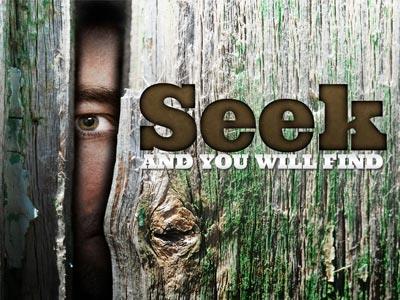-
Separating The Wheat From The Weeds
Contributed by Craig Condon on Apr 8, 2015 (message contributor)
Summary: While the forces of good and evil will be sorted out some day, there is still time for change until that day comes. It is a story about grace, patience and hope. Don’t we often look back on our own mistakes and become thankful that we had time to change?
When I worked at a local lumber mill several years ago, part of my duties included grading lumber. By that I mean separating lumber according to its qualities as determined by both the National Lumber Grading Authority rules and common sense. In other words, I was separating good lumber from bad lumber. Some of this was done before the lumber was planed, and some was done after.
The parable of the weeds and the wheat is a similar situation. The weeds and the wheat are growing up together, and the servants want to pull the weeds. This is understandable, because according to Leviticus 19:19, weeds made a field unclean, along with sowing more than one kind of seed in a field. The master tells the servants to wait until both are fully grown and ready for harvest, because until that time the weeds and the wheat are identical in appearance. Also, because the roots of the weeds and wheat are intertwined, pulling up weeds would also mean pulling up wheat. At harvest time, the weeds are to be gathered separately, bundled together and used for fuel, while the wheat is ground into flour.
The parable has some grain of truth (no pun intended!). In Palestine, a type of weed called darnel grass grows. In its growth and form it strongly resembles wheat, but it produces either an inferior kind of grain or none at all. Because of its similarity, it is extremely difficult to separate from genuine wheat. Also, its taste is very bitter and when eaten either separately or when mixed with ordinary bread, it causes dizziness.
Jesus and the disciples sowed the good seeds of the Christian faith in their time, and true Christians are to sow the same seeds today. In Jesus’ time, as is the case today, the devil and his cronies sow seeds of evil among the good seeds. In both cases, good and evil produced fruit together in the same spot.
This parable outlines the course of history from Jesus’ time to the Day of Judgment. It explains why evil persists all over the world. It emphasizes the proper way to think about the world and the course of human history. It also suggests how we as Christians should be investing our time, talents and energy until Jesus returns. We are to continue sowing the good seeds of the kingdom until the kingdom begins to be seen wherever we raise Christ’s banner
We are like the farmer who carefully sows good seed in the field of our lives. We work hard to raise a good family; make good relationships; help a loved one battling with a disease; fight for better schools, healthcare, peace and the environment. If the world was fair, the good we do would always yield good results, but in many cases the good we work for looks like it is going to have the life choked out of it by the reality of our world.
We live in a world where good and evil coexist, and there’s not much we can do about it. Sure, we can resist evil and temptation, and we must resist them, but we can’t get rid of them. In fact, it isn’t even our job to get rid of them. That will be God’s job on Judgment Day. If we try to get rid of evil on our own, we will fail, because the standards we use to separate good from evil are much lower than the standards God uses. Also, evil and good are intertwined in our society. In addition, good is often disguised as evil, and vice versa.
In the 1600s, the Puritans made a concerted effort to purge the church of all those who weren’t of pure faith, and so, didn’t belong. They also tried to remove pagan symbols from celebrations of Christmas and Easter. In both cases, they failed. After all, if there’s no place in the church for sinners needing to be accepted and loved, there’s no place for us. The church needs constant reformation and positive action, including the quest for holiness, but it must avoid unrealistic purism---what is needed is that elusive thing called balance. No one is so useless that they can’t be used as a bad example.
A man was stopped at a traffic light, waiting for the light to turn green. When the light changed, he was distracted and he didn’t budge. The woman in the car behind him honked her horn. He still didn’t move. She honked again, and by this time she was pounding on the steering wheel and blowing her horn non-stop. Finally, just as the light turned yellow, the man woke up and rove through the light. The woman in the second car was beside herself. Still in mid-rant, she heard a tap on her car window. She looked up to see the face of a police officer. “Lady, you’re under arrest,” he said. “Get out of the car. Put your hands up.” He took her to the police station, had her finger printed, photographed, and then put her in a holding cell.

 Sermon Central
Sermon Central



